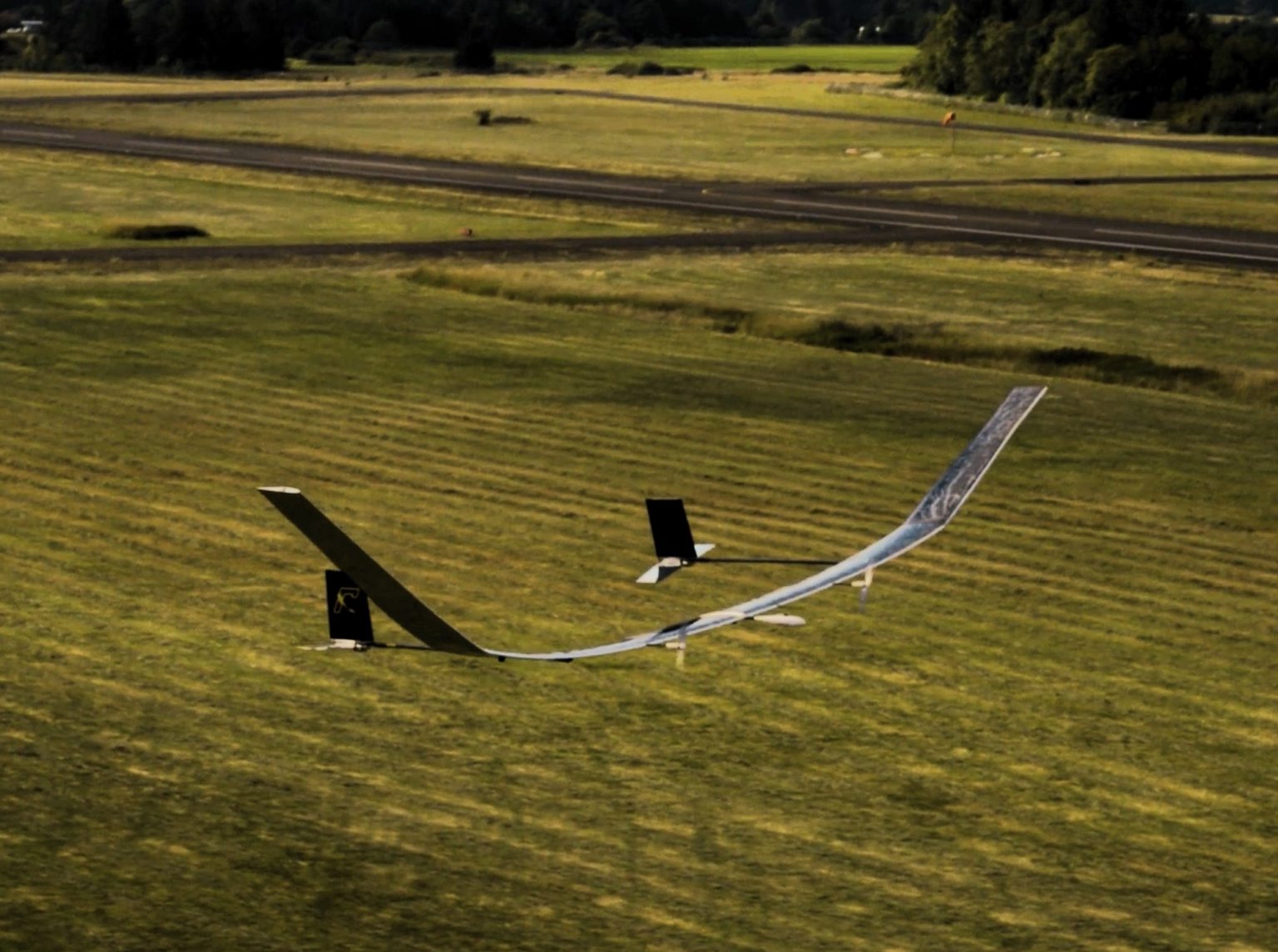Radical’s Solar-Powered Stratospheric Drone Takes Flight
In a significant advancement for sustainable aviation technology, Seattle-based startup Radical has successfully completed the first test flight of their full-size solar-powered drone prototype. This remarkable aircraft, named Evenstar, boasts a wingspan comparable to a Boeing 737 at 120 feet, yet weighs a mere 240 pounds—slightly more than an average adult. The striking disparity between its massive wingspan and minimal weight underscores the extraordinary engineering achievement behind this project. CEO James Thomas and his team conducted this milestone flight at Oregon’s Tillamook UAS Test Range, a federally designated facility for testing uncrewed aerial systems. While the test was conducted at low altitude and powered solely by batteries, it represents a crucial stepping stone toward Radical’s ambitious vision of aircraft that can remain in the stratosphere for months at a time using solar power.
The ingenuity behind Evenstar’s design extends to its unconventional takeoff method—launching from atop a Subaru at speeds just over 15 miles per hour. For this initial test, engineers cleverly added ballast to simulate the weight of the solar panels and additional batteries that will eventually enable stratospheric flight as high as 65,000 feet. This represents just the beginning of Radical’s testing journey, with high-altitude flights planned to commence next year. The successful test follows an earlier achievement in 2023 when the company flew a 13-pound subscale prototype continuously for over 24 hours, further validating their approach to sustainable high-altitude aviation. Founded in mid-2022 by former Amazon Prime Air veterans James Thomas and Cyriel Notteboom, the company has already secured more than $4.5 million in funding to pursue their stratospheric ambitions.
Operating from a manufacturing facility in Seattle’s Ballard neighborhood with an impressively lean team of just seven people, Radical exemplifies the efficiency that permeates every aspect of their business. As Thomas explains, this streamlined approach isn’t merely a business strategy but a necessity that mirrors the design philosophy of their aircraft: “To make this airplane work, it has to be really efficient, right? Really efficient electronics and aerodynamics. And you also need a really efficient team.” While specific details about potential customers remain confidential, Thomas indicated significant interest from both government and commercial sectors. The possible applications for Evenstar span diverse domains including aerial imagery, telecommunications, and weather forecasting—all currently waiting on the product’s successful deployment to the stratosphere.
What makes Evenstar particularly revolutionary is its positioning as what the company calls a “StratoSat”—essentially a satellite alternative that operates in the stratosphere rather than in orbit. This approach offers compelling advantages over traditional satellites, eliminating the substantial costs and logistical challenges associated with rocket launches while still providing many similar capabilities. Designed to carry payloads up to 33 pounds, Evenstar can support high-bandwidth direct-to-device communications or ultra-high-resolution imaging equipment. Beyond these applications, the platform shows tremendous promise for surveillance from a position difficult to attack, providing telecommunication connectivity in underserved regions, monitoring weather patterns, and conducting critical atmospheric research. Thomas emphasized the enthusiasm from customers interested in using the technology to enhance our understanding of Earth’s weather systems and climate—an application area the company is particularly eager to explore.
Radical isn’t alone in pursuing this technological frontier. The market for high-altitude platform stations (HAPS) includes established players like AeroVironment, SoftBank, BAE Systems, Swift Engineering, and several others. The current record for stratospheric solar flight belongs to Airbus’s Zephyr, which completed a 64-day mission in 2022 before ultimately crashing. Not all ventures in this space have succeeded; notable failures include abandoned projects by tech giants Alphabet (which shut down Titan Aerospace in 2016) and Facebook (which ended Project Aquila in 2018). However, Thomas remains optimistic about the current landscape, noting that critical enabling technologies have matured significantly over the past decade: battery energy density has doubled, solar cells have become ten times more affordable, and advances in computing and AI have transformed what’s possible in aerospace.
The convergence of these technological improvements has created what Thomas describes as a “critical inflection point” where persistent infrastructure in the sky is finally becoming viable. “Not only do our models say this will work, but we have flight data that agrees with our models, and says this is a technology that can serve its purpose,” Thomas explained. This validation through both theoretical modeling and practical flight testing gives Radical confidence that they’re on the right path. While the concept of solar-powered stratospheric aircraft isn’t new—engineers and visionaries have pursued it for decades—the technological ecosystem has finally evolved to make this dream achievable. As Radical continues to develop and test their Evenstar aircraft, they’re not just building a drone; they’re pioneering a new category of aerial platform that could fundamentally transform how we monitor our planet, communicate across vast distances, and gather critical data about our changing climate.














